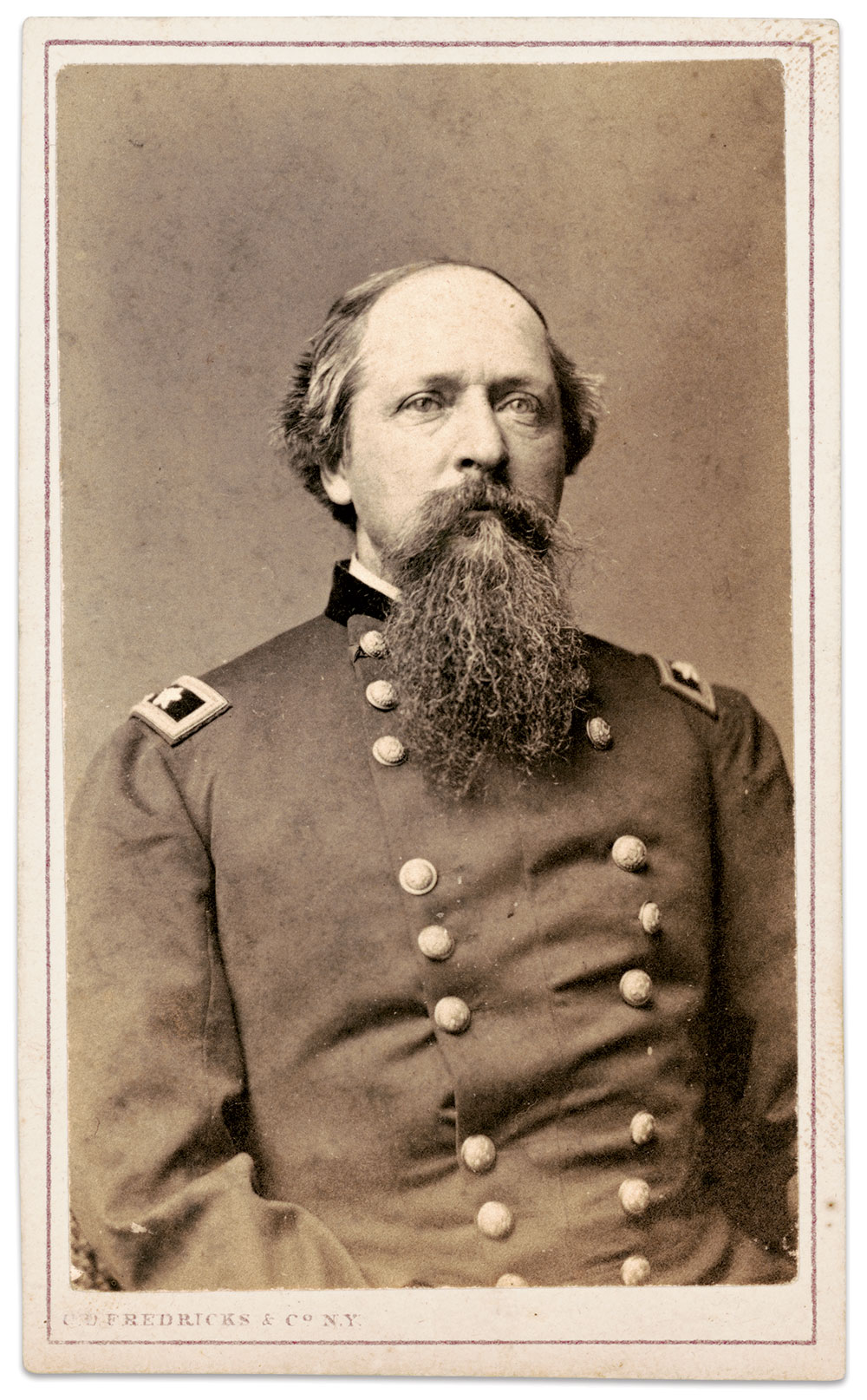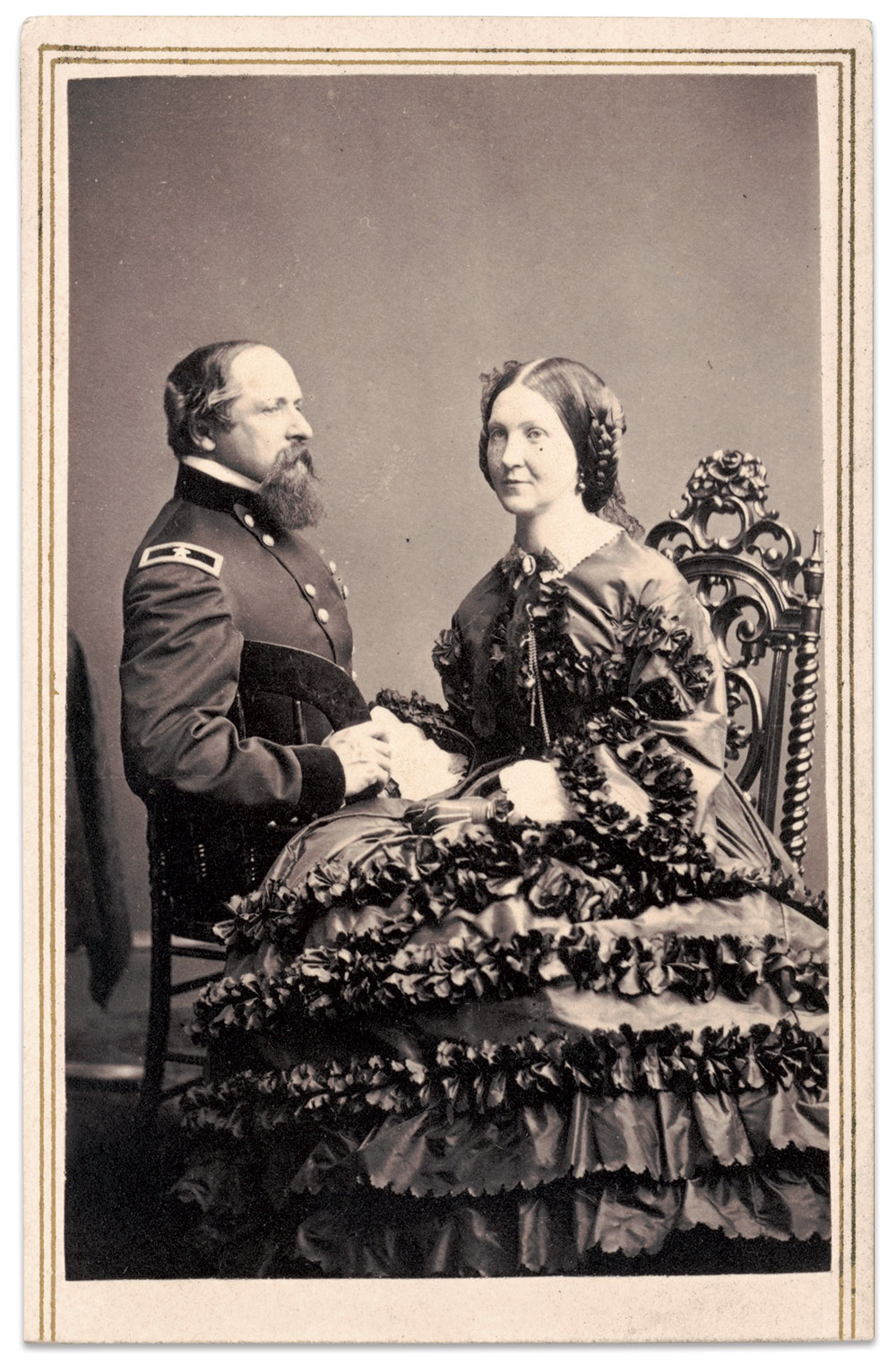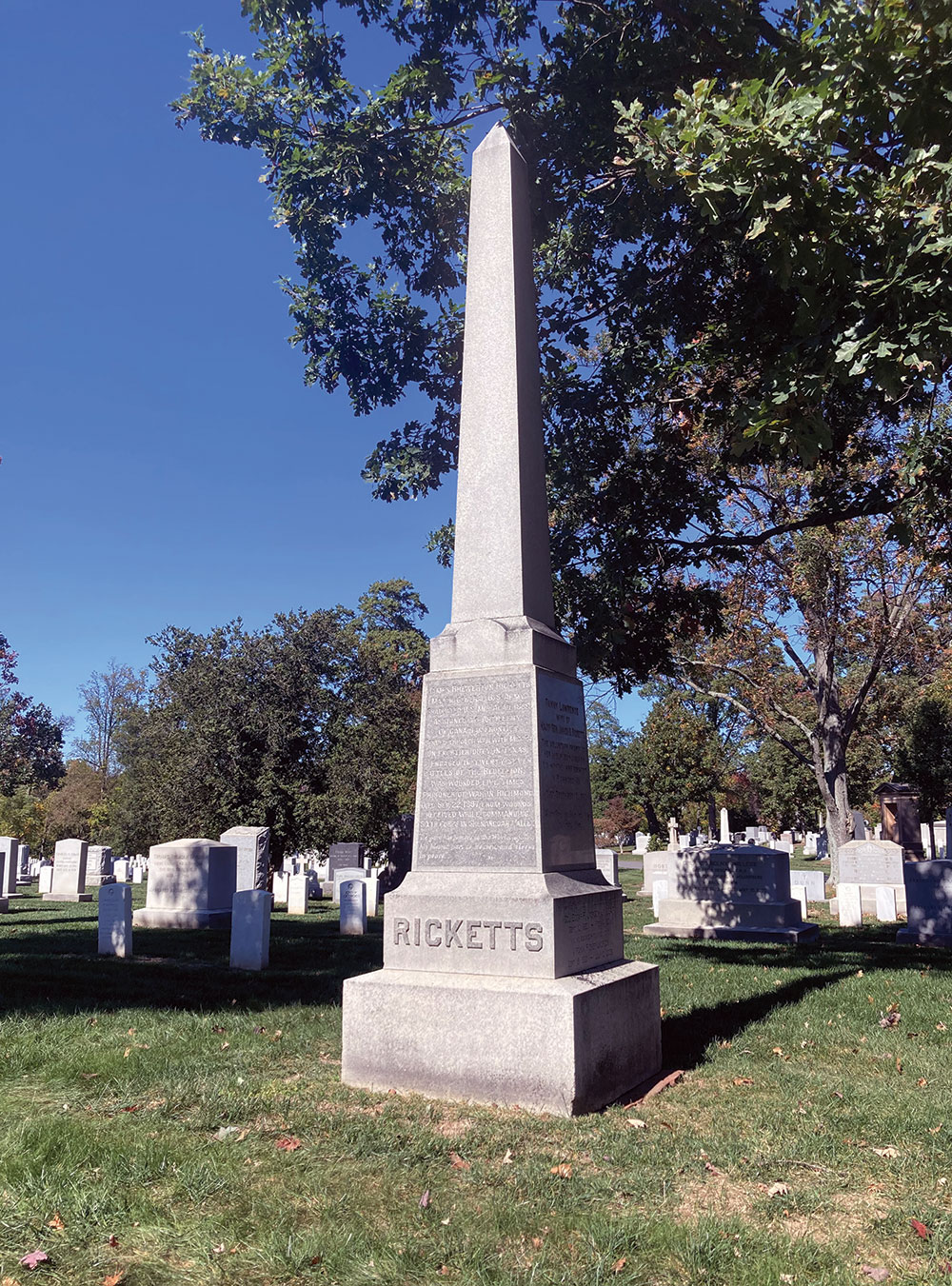A writer visiting Arlington National Cemetery in the late 19th century noted Civil War veterans paying tribute at the memorial to Maj. Gen. James Brewerton Ricketts. “No more daring or chivalrous soldier lies beneath the Arlington sod than Ricketts, and the members of his old command lovingly deck his tomb with flowers on each recurring Memorial Day.”

One of the comrades who knew him best, Brig. Gen. Henry J. Hunt, had graduated with Ricketts from West Point in 1839 and fought alongside him in the Mexican War. Hunt, the respected Chief of Artillery in the Army of the Potomac, remembered Cadet Ricketts as a class favorite: a quiet and modest young man who applied himself to his studies and remained faithful to his obligations. “He carried these traits with him into the army,” Hunt recalled, “and his successful career was due, not to any extraordinary circumstances or opportunities, but to a thorough discharge of all duties as they presented themselves.”
Ricketts’ record reflects Hunt’s assessment. By the time the war closed, the six-times wounded Ricketts might have boasted one of the most impressive records of any officer. He did not, of course. He was not one to draw attention to himself.
At the First Battle of Bull Run in 1861, Capt. Ricketts suffered three wounds and fell into enemy hands while in command of his artillery battery. In 1862 at Antietam, now Brig. Gen. Ricketts, in command of an infantry division, had two horses shot from beneath him, one falling on top of him, resulting in serious injuries. Returning to command for the 1864 Overland Campaign, he received praise for his leadership. In July at the Battle of the Monocacy, he suffered another wound. A few months later at Cedar Creek, a bullet struck him in the right chest, passed through a lung and lodged in his back. Ricketts, hobbled by injuries, returned to duty and participated in the Appomattox Campaign.


Ricketts continued in the Regular Army, but war wounds shattered his health and prompted his resignation in 1867. He and his wife, Fanny, raised a family of five. Fanny, who had come to Ricketts’ aid after First Bull Run and accompanied him to prison in the Confederate capital, earned praise by one wartime newspaper as a “heroine among the heroes of the war for the Constitution.”
Ricketts passed away in 1887 at age 70. Fanny joined him in 1900. They are buried side by side at Arlington.
Most Hallowed Ground is part of the Arlington National Cemetery (ANC) Project. Established by Jim Quinlan of The Excelsior Brigade, its mission is to identify all Civil War veterans on the grounds. Contact Jim at 703-307-0344.
SPREAD THE WORD: We encourage you to share this story on social media and elsewhere to educate and raise awareness. If you wish to use any image on this page for another purpose, please request permission.
LEARN MORE about Military Images, America’s only magazine dedicated to showcasing, interpreting and preserving Civil War portrait photography.
VISIT OUR STORE to subscribe, renew a subscription, and more.

